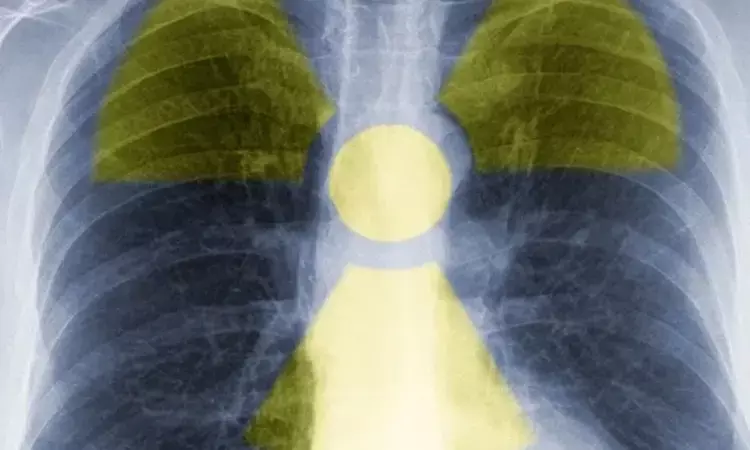- Home
- Medical news & Guidelines
- Anesthesiology
- Cardiology and CTVS
- Critical Care
- Dentistry
- Dermatology
- Diabetes and Endocrinology
- ENT
- Gastroenterology
- Medicine
- Nephrology
- Neurology
- Obstretics-Gynaecology
- Oncology
- Ophthalmology
- Orthopaedics
- Pediatrics-Neonatology
- Psychiatry
- Pulmonology
- Radiology
- Surgery
- Urology
- Laboratory Medicine
- Diet
- Nursing
- Paramedical
- Physiotherapy
- Health news
- Fact Check
- Bone Health Fact Check
- Brain Health Fact Check
- Cancer Related Fact Check
- Child Care Fact Check
- Dental and oral health fact check
- Diabetes and metabolic health fact check
- Diet and Nutrition Fact Check
- Eye and ENT Care Fact Check
- Fitness fact check
- Gut health fact check
- Heart health fact check
- Kidney health fact check
- Medical education fact check
- Men's health fact check
- Respiratory fact check
- Skin and hair care fact check
- Vaccine and Immunization fact check
- Women's health fact check
- AYUSH
- State News
- Andaman and Nicobar Islands
- Andhra Pradesh
- Arunachal Pradesh
- Assam
- Bihar
- Chandigarh
- Chattisgarh
- Dadra and Nagar Haveli
- Daman and Diu
- Delhi
- Goa
- Gujarat
- Haryana
- Himachal Pradesh
- Jammu & Kashmir
- Jharkhand
- Karnataka
- Kerala
- Ladakh
- Lakshadweep
- Madhya Pradesh
- Maharashtra
- Manipur
- Meghalaya
- Mizoram
- Nagaland
- Odisha
- Puducherry
- Punjab
- Rajasthan
- Sikkim
- Tamil Nadu
- Telangana
- Tripura
- Uttar Pradesh
- Uttrakhand
- West Bengal
- Medical Education
- Industry
Activated fibroblasts targeting holds potential for detection of lung fibrosis: Study

USA: Positron emission tomography (PET) using a 68Ga-labeled fibroblast activation protein inhibitor (FAPI) can be used as a noninvasive imaging tool for early diagnosis and monitoring of pulmonary fibrosis, finds a recent study. FAPI-PET, by binding to the activated fibroblasts present in affected lungs, allows for direct imaging of the disease process.
"It would also provide an opportunity for molecular imaging to reduce the frequency of lung biopsies, which carry their own inherent risks," wrote the authors.
The findings of the study were presented at the Society of Nuclear Medicine and Molecular Imaging 2021 Annual Meeting and subsequently published in the Journal of Nuclear Medicine.
Idiopathic pulmonary fibrosis (IPF) causes substantial scarring to the lungs, making it difficult for those impacted to breathe. It is a significant cause of morbidity and mortality in the United States, with more than 40,000 deaths annually. A major challenge in diagnosis and treatment of IPF is the lack of a specific diagnostic tool that can noninvasively diagnose and assess disease activity, which is crucial for the management of pulmonary fibrosis patients.
"CT scans can provide physicians with information on anatomic features and other effects of IPF but not its current state of activity. We sought to identify and image a direct noninvasive biomarker for early detection, disease monitoring and accurate assessment of treatment response," said Carolina de Aguiar Ferreira, PhD, a research associate at the University of Wisconsin-Madison in Madison, Wisconsin.
In the study, researchers targeted the fibroblast activation protein that is overexpressed in IPF as a potential biomarker. Two groups of mice--one group with induced pulmonary fibrosis and one control group--were scanned with the FAPI-based PET/CT radiotracer 68Ga-FAPI-46 at multiple time points. Compared to the control group, the mice with induced pulmonary fibrosis had a much higher uptake of the radiotracer, allowing researchers to successfully identify and evaluate areas of IPF.
"Further validation of 68Ga-FAPI-46 for the detection and monitoring of pulmonary fibrosis would make this molecular imaging tool the first technique for early, direct, and noninvasive detection of disease. It would also provide an opportunity for molecular imaging to reduce the frequency of lung biopsies, which carry their own inherent risks," noted Ferreira. "This development will demonstrate that functional imaging can play an invaluable role in evaluation of the disease process."
Reference:
The study titled, "Targeting Activated Fibroblasts for Non-invasive Detection of Lung Fibrosis," is published in The Journal of Nuclear Medicine.
DOI: https://jnm.snmjournals.org/content/62/supplement_1/10
Hina Zahid Joined Medical Dialogue in 2017 with a passion to work as a Reporter. She coordinates with various national and international journals and association and covers all the stories related to Medical guidelines, Medical Journals, rare medical surgeries as well as all the updates in the medical field. Email: editorial@medicaldialogues.in. Contact no. 011-43720751
Dr Kamal Kant Kohli-MBBS, DTCD- a chest specialist with more than 30 years of practice and a flair for writing clinical articles, Dr Kamal Kant Kohli joined Medical Dialogues as a Chief Editor of Medical News. Besides writing articles, as an editor, he proofreads and verifies all the medical content published on Medical Dialogues including those coming from journals, studies,medical conferences,guidelines etc. Email: drkohli@medicaldialogues.in. Contact no. 011-43720751


